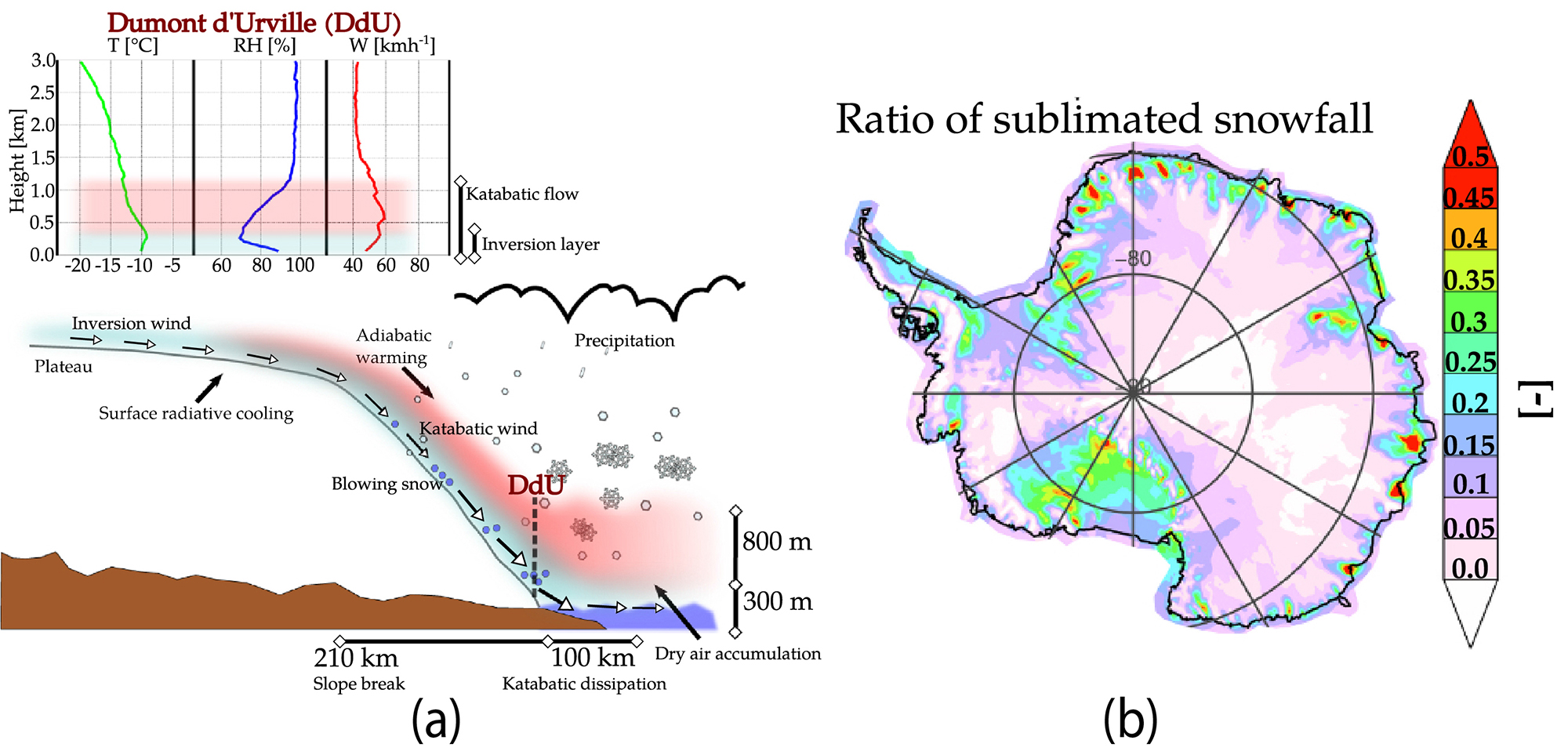A new field work study evaluates how katabatic winds can reduce the amount of precipitation actually reaching the surface.
PNAS from Grazioli et al, 2017
Accumulation of precipitation is the principal input contribution to the ice sheet mass balance in Antarctica. Yet, only very few in situ snowfall observations are realised and the only way to evaluate globally around Antarctica the evolution of the snowfall rates is through satellite observations. New weather radar measurements of precipitation realised at the coastal station Dumont d’Urville show that these satellite observations might be biased and not provide an accurate estimate of the precipitation actually reaching the surface. Indeed, due to the presence of warm, undersaturated air close to the surface (below 800m), a significant amount of the precipitation sublimates before it touches the ground (see Fig. 1a)). This feature is due to the presence of katabatic winds which are spread all around the margins of Antarctica. Yet, satellite usually cannot see close to the surface and use measurements above 800m as a proxy for surface precipitation.

Fig 1: a) Schematic of the sublimation of precipitation near the surface due to warm undersaturated air created by katabatic wind and b) map of the amount of snowfall sublimating through this layer around Antarctica, adapted from Grazioli et al. [2017]
Three different modelling exercises have been able to reproduce the observations of sublimation of the precipitation. They highlight that roughly 17% of the total snowfall on the entire continent never reaches the ground, and that on the East Antarctic margin it can reach up to 50% (see Fig. 1b)).
These low-level sublimations of precipitation can directly affect prediction for ice sheet mass balance in the context of climate change. Indeed, as a thermodynamical response to global warming, the snowfall increases as the atmosphere is able to hold more moisture. Yet, changes in the moisture content and in the strength of katabatic winds are also expected and low-level sublimations of precipitation associated with warmer temperature could compensate snowfall increase.
Grazioli, J. et al. Katabatic winds diminish precipitation contribution to the Antarctic ice mass balance. Proceedings of the National Academy of Sciences, 201707633
Full article at: http://www.pnas.org/content/114/41/10858.full
MC


